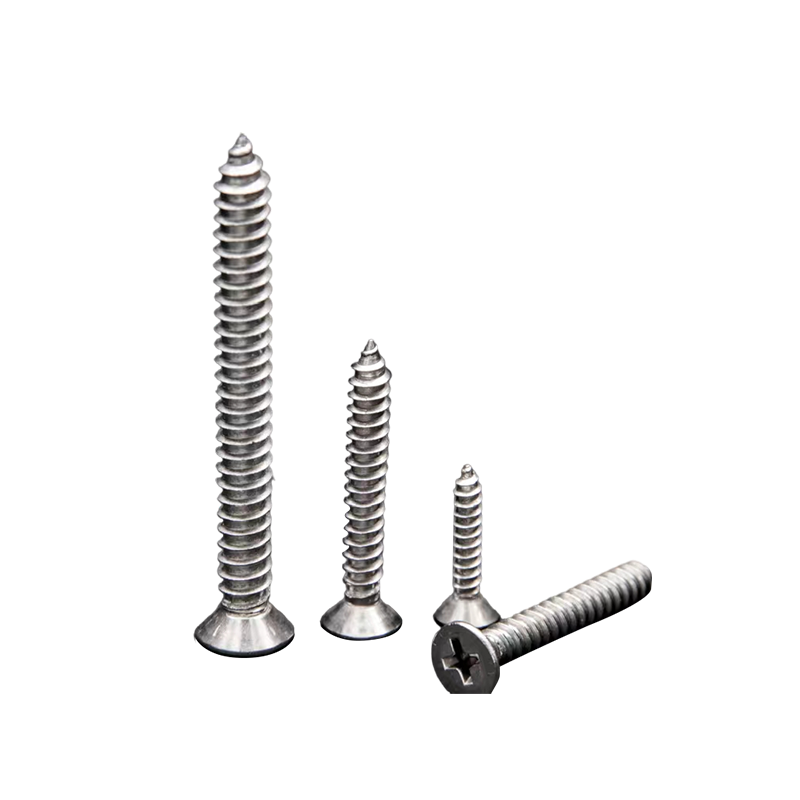Stainless Steel Self-tapping Screws are widely used in industries ranging from construction and automotive to electronics and home improvement. Among the many types available, stainless steel selftapping screws are particularly popular for their strength, corrosion resistance, and reliability. However, not all stainless steel is the same, and choosing the best material for stainless steel selftapping screws depends on your specific application.
This article will explore the most common stainless steel materials used for selftapping screws, compare their properties, and guide you in selecting the most suitable option for your needs.
What Are SelfTapping Screws?
Before diving into materials, let's briefly understand what selftapping screws are.
Selftapping screws are fasteners designed to tap their own threads as they are driven into materials like metal, wood, or plastic. They eliminate the need for prethreading, making them ideal for quicker assembly in production and DIY projects.
There are two main types:
Threadforming selftapping screws – for softer materials like plastic or thin metal
Threadcutting selftapping screws – with cutting edges that remove material as they enter harder surfaces
For both types, the material of the screw plays a critical role in performance, durability, and resistance to environmental conditions.
Common Stainless Steel Grades for SelfTapping Screws
Several stainless steel grades are used for manufacturing selftapping screws. Each has unique properties in terms of strength, corrosion resistance, machinability, and cost. Here are the most common ones:
1. AISI 304 Stainless Steel (188 Stainless)
Composition: 18% chromium, 8% nickel
Corrosion Resistance: Excellent in most indoor and mild outdoor environments
Strength: Good mechanical strength
Magnetic: Nonmagnetic in annealed state
Cost: Moderate
Applications:
HVAC
Furniture
Appliances
Interior construction
Pros:
Great corrosion resistance in humid conditions
Readily available and affordable
Safe for foodgrade applications
Cons:
Not ideal for highly corrosive or marine environments
Lower strength compared to hardened steel
2. AISI 316 Stainless Steel
Composition: 16% chromium, 10% nickel, 2% molybdenum
Corrosion Resistance: Excellent – even in saltwater and chemical environments
Strength: Comparable to 304 but with superior corrosion resistance
Magnetic: Nonmagnetic
Cost: Higher than 304
Applications:
Marine hardware
Medical devices
Chemical processing
Coastal or wet environments
Pros:
Exceptional resistance to chlorides and acids
Suitable for outdoor and marine use
Longlasting even in harsh environments
Cons:
Higher price point
May be overkill for basic indoor applications
3. AISI 410 Stainless Steel (Martensitic Stainless Steel)
Composition: 11.5–13.5% chromium, low nickel
Corrosion Resistance: Moderate – better than carbon steel but less than 304/316
Strength: High – can be heattreated to increase hardness
Magnetic: Yes
Cost: Low to moderate
Applications:
Automotive
Light machinery
Dry indoor applications
Pros:
High tensile strength and wear resistance
Magnetic and hardenable by heat treatment
Costeffective for structural use
Cons:
Poor resistance to marine or acidic environments
Can rust in humid or wet conditions

4. Bimetal Screws (Carbon Steel Tip + Stainless Steel Body)
Some manufacturers produce bimetal selftapping screws where the body is stainless steel (typically 304 or 316), but the tip is hardened carbon steel. This combines corrosion resistance with easy penetration into hard materials.
Applications:
Roofing
Metal framing
Outdoor cladding
Pros:
Best of both worlds: corrosion resistance + selfdrilling strength
Excellent for fastening stainless to steel or other tough materials
Cons:
More expensive than singlematerial screws
Limited availability in some regions
Choosing the Best Material: Key Considerations
To determine which stainless steel is best for your selftapping screw application, consider the following factors:
1. Environment
Dry indoor use → 304 or 410 stainless steel
Marine or highhumidity → 316 stainless steel
Chemical exposure → 316 stainless steel
2. Mechanical Requirements
High load or stress → 410 (hardened) or bimetal
Generalpurpose → 304 stainless steel
3. Budget
Tight budget → 410 stainless
Balanced cost/performance → 304 stainless
Premium durability → 316 stainless
4. Magnetic Needs
If magnetism matters (for sensors or machinery), choose 410 stainless.
Final Recommendation
There is no onesizefitsall answer, but here is a simplified summary:
| Material | Best For | Pros | Cons |
| 304 SS | General use | Corrosion resistant, affordable | Lower hardness |
| 316 SS | Harsh environments | Marinegrade, chemicalresistant | Expensive |
| 410 SS | High strength | Hard, wearresistant | Moderate corrosion resistance |
| Bimetal | Tough materials | Drillable + rustproof | Premium price |
If you need high corrosion resistance, go with 316 stainless. For standard indoor use, 304 stainless offers a good balance. And for strong mechanical performance at a lower cost, 410 stainless is a smart choice.
The best material for stainless steel selftapping screws depends on where and how you plan to use them. By understanding the strengths and limitations of different stainless steel grades, you can choose the right screw that offers longlasting performance, safety, and value.



 русский
русский Español
Español عربى
عربى italiano
italiano
 No. 2 Bridge, Chuangxin Road, Dainan Town, Xinghua City, Taizhou City, Jiangsu Province
No. 2 Bridge, Chuangxin Road, Dainan Town, Xinghua City, Taizhou City, Jiangsu Province  +86-17315333748(Wechat)
+86-17315333748(Wechat)
 +86-17315333748(Wechat/Whatsapp)
+86-17315333748(Wechat/Whatsapp)

